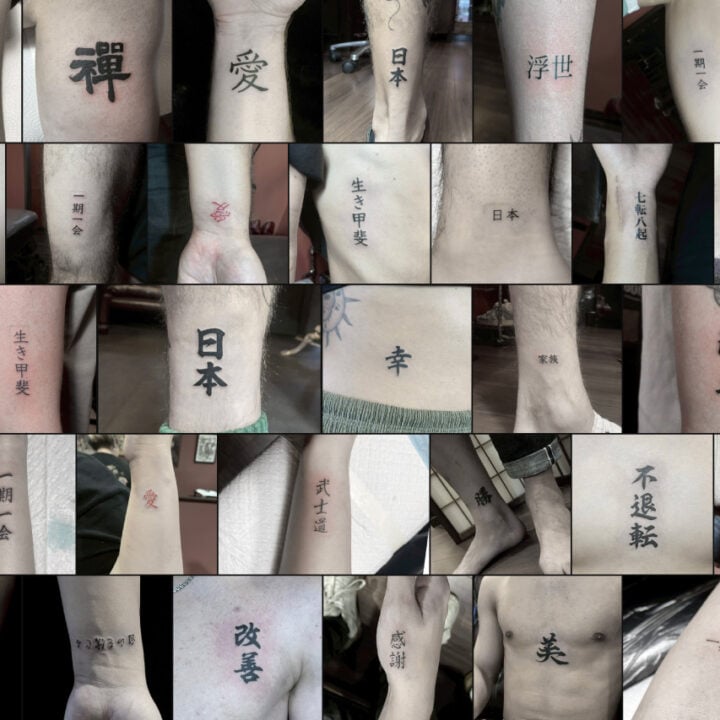
Contents
- What Is a Kanji Tattoo? Why Japanese Word Tattoos Resonate Worldwide
- Kanji Tattoo Meaning: Getting the Word Right
- Script and Feel: From Kaisho to Tensho — The Calligraphic Spectrum
- Placement and Scale: Common Patterns for Minimal Japanese Tattoos
- How Good Times Ink Osaka Ensures Meaning‑Accurate Kanji
- 20 Popular Kanji Tattoo Ideas (Meaning, Background, Symbolism)
- 改善 (Kaizen) — Self‑Improvement
- 一期一会 (Ichigo Ichie) — Once‑in‑a‑Lifetime Encounter
- 愛 (Ai) — Love
- 家族 (Kazoku) — Family
- 旅行 (Ryokō) — Travel / Journey
- 侘び寂び (Wabi‑Sabi) — Imperfection and Beauty
- 力 (Chikara) — Power / Strength
- 乾杯 (Kanpai) — Cheers / Celebration
- 日本 (Nihon / Nippon) — Japan
- 不撓不屈 (Futō Fukutsu) — Never Give Up
- 木漏れ日 (Komorebi) — Sunlight Through Trees
- 幸 (Sachi) — Happiness
- 武士道 (Bushidō) — Way of the Samurai
- 生き甲斐 (Ikigai) — Reason for Living
- 七転び八起き (Nanakorobi Yaoki) — Fall Seven Times, Rise Eight
- 友達 (Tomodachi) — Friendship
- 静寂 (Seijaku) — Silence / Serenity
- 忍耐 (Nintai) — Endurance / Perseverance
- 絆 (Kizuna) — Bond / Connection
- 運命 (Unmei) — Destiny / Fate
- Why Choose Good Times Ink in Osaka for Your Kanji Tattoo
What Is a Kanji Tattoo? Why Japanese Word Tattoos Resonate Worldwide

Kanji tattoos are not just decorative marks. Each character holds meaning, history, and feeling in a simple, elegant shape. For travelers and Japan‑lovers, a Kanji Tattoo is a clean way to carry a value, memory, or belief on your skin.
Kanji are logographic, not alphabetic. A single sign like 「力」 shows “strength” at a glance, while a compound such as 「不撓不屈」 expresses a full idea of resilience. This rich meaning—and the calm beauty of brush‑based forms—is why Japanese Symbol Tattoos keep growing in popularity worldwide.
At Good Times Ink Osaka, we treat kanji as living language. We check meanings, nuance, and writing so your tattoo reads naturally to Japanese speakers. Because our artists work in both English and Japanese, you can share ideas freely and choose words that truly fit your story.
Kanji Tattoo Meaning: Getting the Word Right
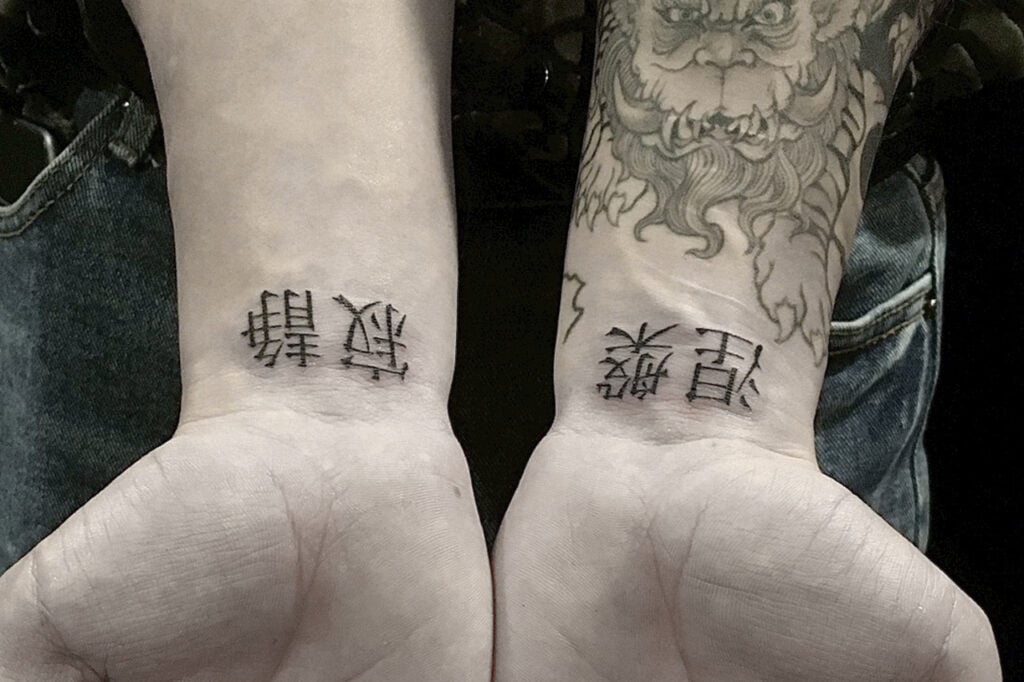
“Getting it right” is more than copying a dictionary. Many kanji have several readings and shades of meaning. Some ideas work best as one character (e.g., 「幸」 for “happiness”). Others feel natural only as a compound (e.g., 「生き甲斐」 for “ikigai”). We guide you to expressions native speakers actually use and respect.
Machine translation often misses nuance or picks odd characters. Look‑alikes can also cause mistakes—like confusing 「侘」 with 「詫」 in wabi‑sabi. Our bilingual team cross‑checks with trusted references and native intuition so your Japanese Word Tattoo says what you mean.
Script and Feel: From Kaisho to Tensho — The Calligraphic Spectrum
Script changes the mood of your tattoo. Kaisho (standard) is clear and timeless. Gyosho (semi‑cursive) has a gentle flow. Sosho (cursive) is expressive and abstract. Tensho (seal) feels old and carved. The same word—say “calm”—can look serene in Kaisho and more contemplative in Gyosho.
Kanji come from brushwork, so stroke beginnings and endings matter. Even in small pieces, slight shifts in line weight keep the “heart(心)” of calligraphy and elevate a minimalist Aesthetic Symbol Tattoo.
Placement and Scale: Common Patterns for Minimal Japanese Tattoos

Every body and lifestyle is different, but small to medium sizes on the wrist, inner forearm, collarbone, or upper back are popular for Kanji Tattoos. These spots give strokes room to breathe without overpowering the design. We balance legibility, longevity, and harmony with your proportions.
How Good Times Ink Osaka Ensures Meaning‑Accurate Kanji
Clarity comes first. Our bilingual team confirms character choice, reading, and tone in plain language before any line goes on skin. We avoid awkward new coinages, check compound order, and watch for look‑alike characters. The result: a Kanji Tattoo that makes sense to Japanese readers and feels true to you.
20 Popular Kanji Tattoo Ideas (Meaning, Background, Symbolism)
改善 (Kaizen) — Self‑Improvement

Meaning
「改善」 means steady, continuous improvement—practical and forward‑looking.
Background & Cultural Context
Born in Japan’s postwar quality culture, it moved from factories to daily life.
Why People Choose It
Great for fitness, craft, and anyone who believes small steps add up.
Symbolism & Themes
Patience, growth, discipline.
一期一会 (Ichigo Ichie) — Once‑in‑a‑Lifetime Encounter

Meaning
「一期一会」 says each meeting is unique and won’t repeat, reminding us to cherish each encounter.
Background & Cultural Context
From tea ceremony etiquette, it asks hosts and guests to honor the moment.
Why People Choose It
To mark travel, creative work, or turning points and happy chances.
Symbolism & Themes
Mindfulness, gratitude, openness.
愛 (Ai) — Love
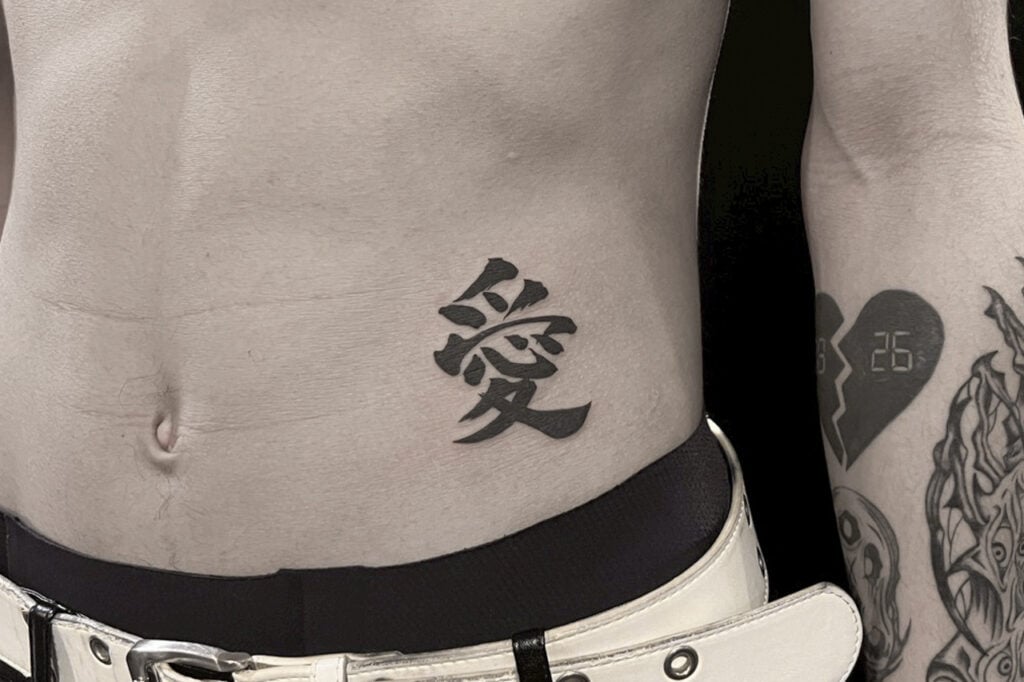
Meaning
「愛」 is deep, lasting love—for partners, family, and friends.
Background & Cultural Context
The character’s structure places “heart” at its core, adding visual poetry.
Why People Choose It
A classic Japanese Symbol Tattoo for vows and anniversaries.
Symbolism & Themes
Care, loyalty, compassion, warmth.
家族 (Kazoku) — Family

Meaning
「家族」 honors family—grandparents to grandchildren and all who hold you together.
Background & Cultural Context
It reflects Japan’s strong value on intergenerational care and connection.
Why People Choose It
To celebrate lineage, new children, and shared milestones across generations.
Symbolism & Themes
Roots, legacy, everyday love.
旅行 (Ryokō) — Travel / Journey

Meaning
「旅行」 covers the outer trip and the inner learning that follows.
Background & Cultural Context
From pilgrimages to rail adventures, the word is full of travel images in Japan.
Why People Choose It
Perfect to mark a life‑changing journey or season of self‑discovery.
Symbolism & Themes
Curiosity, openness, wayfinding.
侘び寂び (Wabi‑Sabi) — Imperfection and Beauty

Meaning
「侘び寂び」 finds quiet beauty in change, wear, and time’s touch.
Background & Cultural Context
Seen in tea bowls and weathered wood. Note: the correct characters are 「侘」 and 「寂」 (not 「詫」).
Why People Choose It
For those who value the real over the polished—the core of the Wabisabi Tattoo trend.
Symbolism & Themes
Humility, presence, seasons of life.
力 (Chikara) — Power / Strength
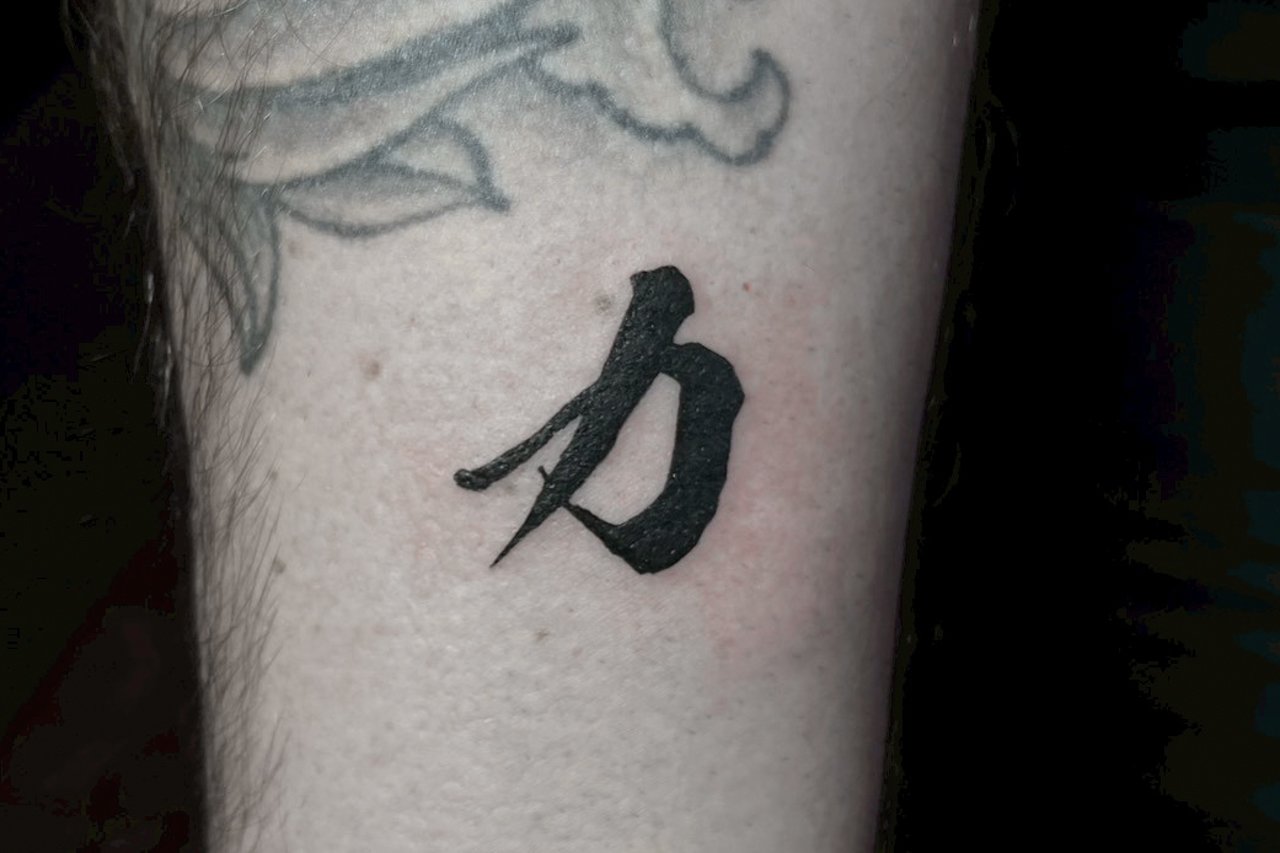
Meaning
「力」 is a bold, single‑character statement of strength.
Background & Cultural Context
Used since ancient times, it feels timeless and clear.
Why People Choose It
Great for minimal pieces and athletic stories.
Symbolism & Themes
Resilience, endurance, capability.
乾杯 (Kanpai) — Cheers / Celebration
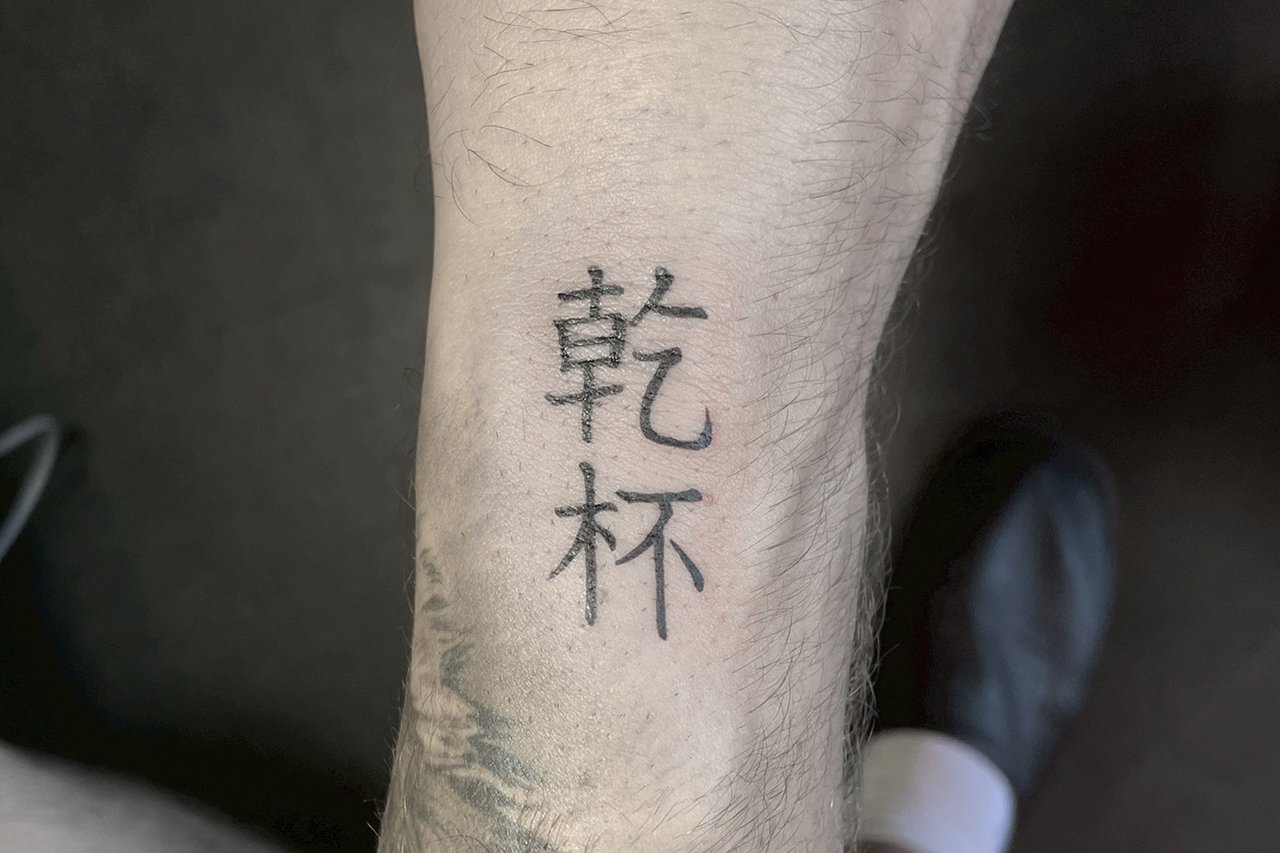
Meaning
「乾杯」 is the joyful toast before a shared drink—pure celebration.
Background & Cultural Context
Heard in izakaya and at family tables, “kanpai” brings people together fast.
Why People Choose It
To honor friendships, reunions, and wins worth toasting again and again.
Symbolism & Themes
Connection, joy, shared moments.
日本 (Nihon / Nippon) — Japan
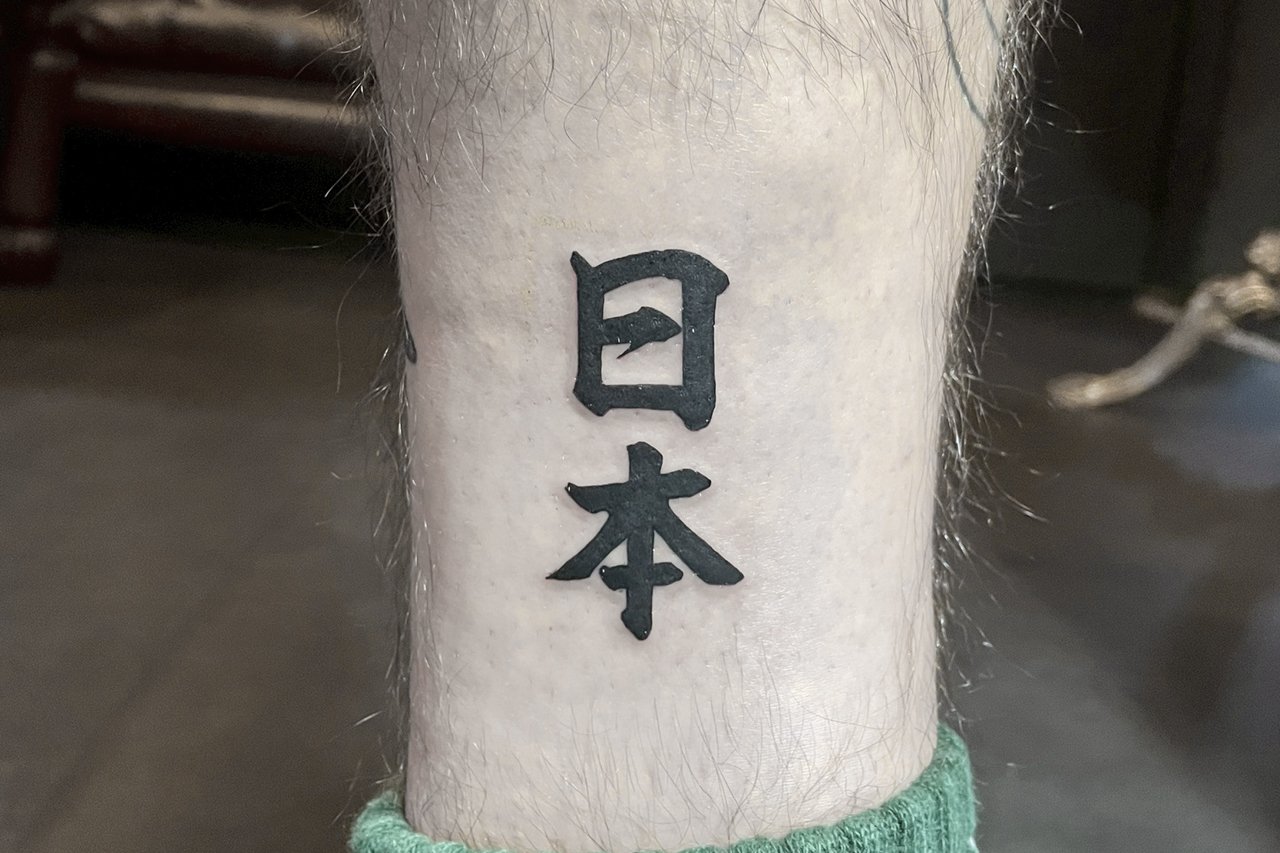
Meaning
「日本」 means “origin of the sun,” a poetic name for the country.
Background & Cultural Context
Seen in classic texts and on modern signs, it resonates with travelers’ love for the islands.
Why People Choose It
To honor heritage, years abroad, or a trip that changed everything.
Symbolism & Themes
Sunrise, beginnings, belonging.
不撓不屈 (Futō Fukutsu) — Never Give Up
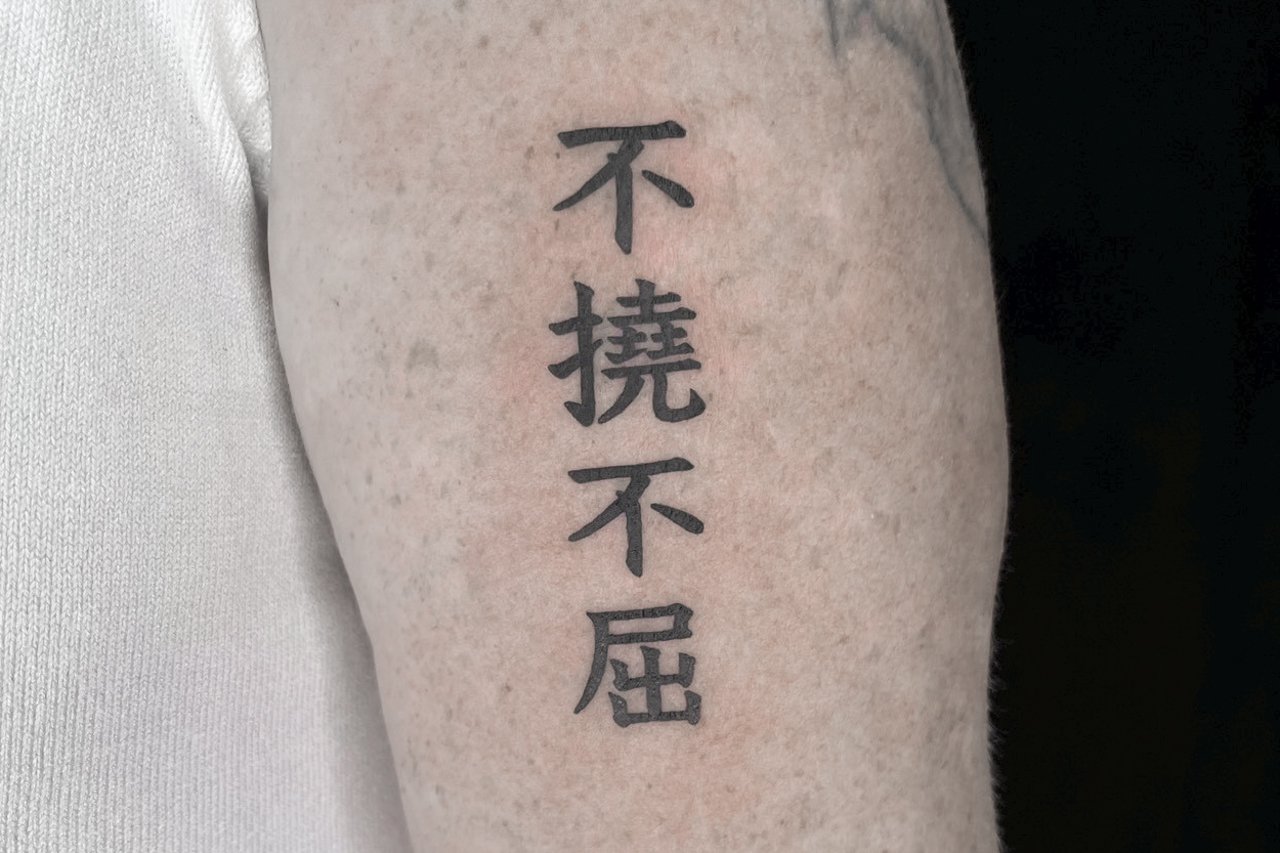
Meaning
「不撓不屈」 declares unbending will—refusing to yield.
Background & Cultural Context
A classic four‑character idiom with a strong, principled tone.
Why People Choose It
A banner for athletes, founders, and survivors of hard seasons.
Symbolism & Themes
Tenacity, grit, courage under pressure.
木漏れ日 (Komorebi) — Sunlight Through Trees

Meaning
「木漏れ日」 names the soft, dappled light that filters through leaves.
Background & Cultural Context
There is no single English word for komorebi. Because of this “untranslatable” charm, it’s a favorite term for visitors and photographers. The mood is gentle, calm, and very Japanese.
Why People Choose It
To recall quiet walks, forests, and the healing feel of green shade—popular with tourists seeking a uniquely Japanese word tattoo.
Symbolism & Themes
Calm, renewal, nature’s rhythm.
幸 (Sachi) — Happiness
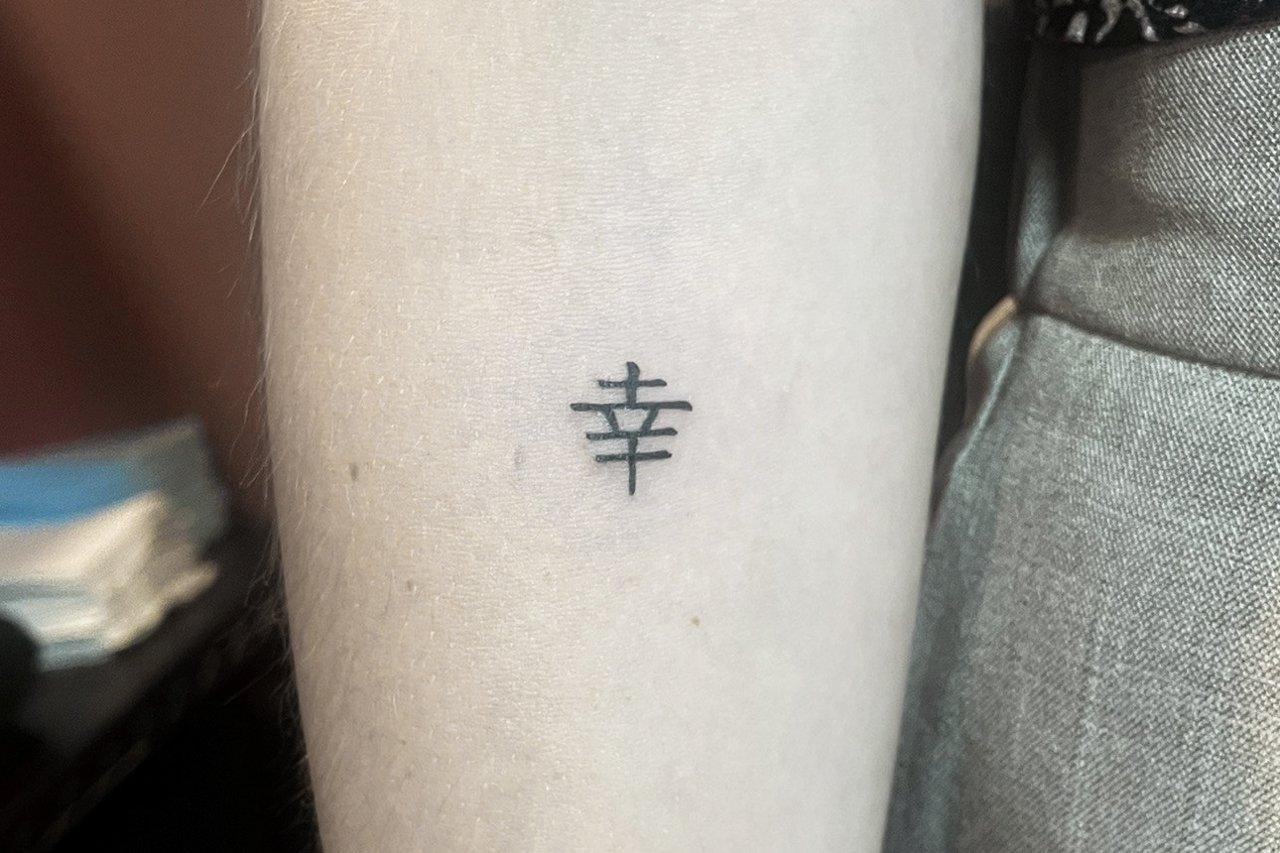
Meaning
「幸」 shows good fortune and a content heart in one compact sign.
Background & Cultural Context
Common in names and greetings, it carries an auspicious tone.
Why People Choose It
A positive daily reminder that stays elegant at small sizes.
Symbolism & Themes
Blessing, gratitude, ease.
武士道 (Bushidō) — Way of the Samurai
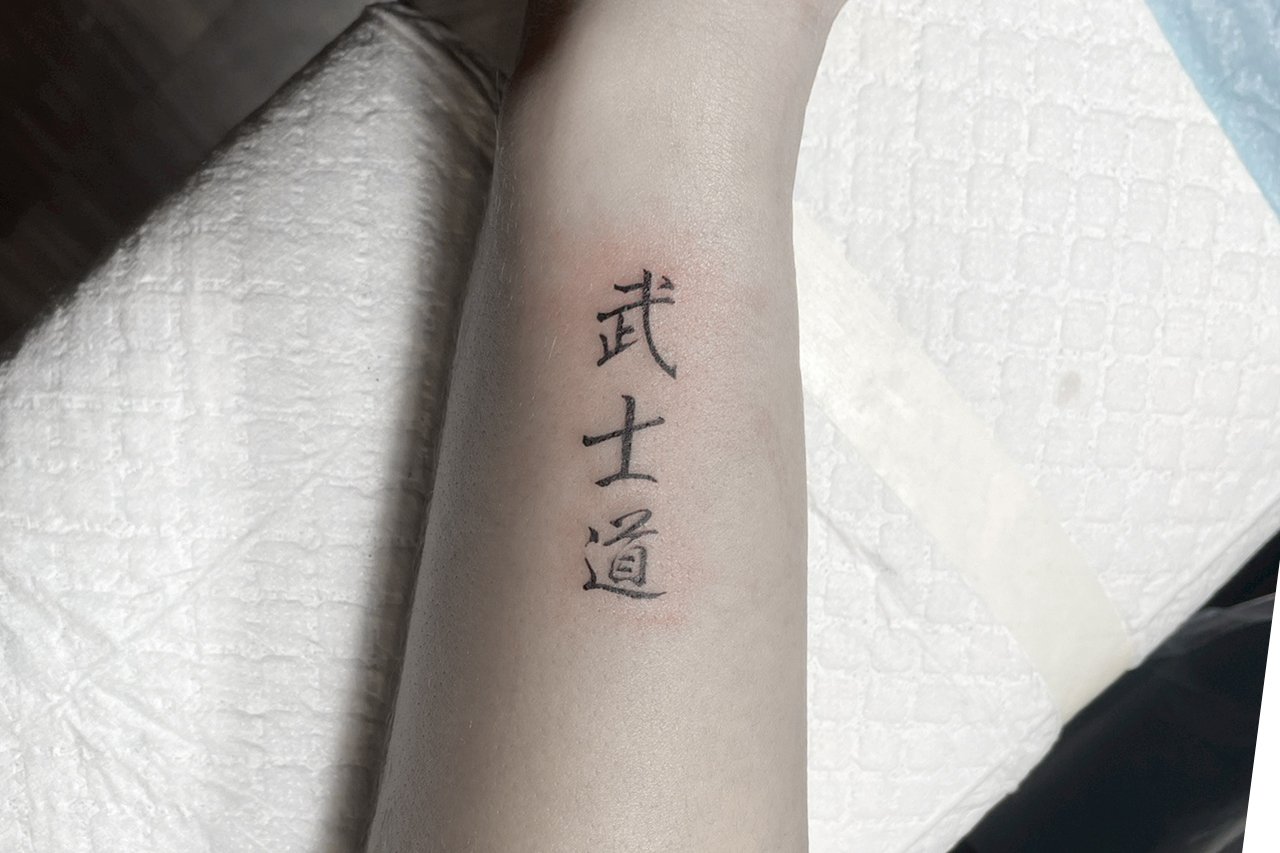
Meaning
「武士道」 points to ideals from the samurai tradition: loyalty, rectitude, courage.
Background & Cultural Context
Interpretations differ, but worldwide it signals honorable conduct.
Why People Choose It
For those drawn to discipline, service, and a clear inner code.
Symbolism & Themes
Honor, duty, self‑control.
生き甲斐 (Ikigai) — Reason for Living

Meaning
「生き甲斐」 is what makes life feel meaningful—what you love and do well.
Background & Cultural Context
Famous worldwide, yet rooted in everyday joys and balance.
Why People Choose It
To steer careers and lifestyles with a personal North Star.
Symbolism & Themes
Purpose, balance, fulfillment.
七転び八起き (Nanakorobi Yaoki) — Fall Seven Times, Rise Eight
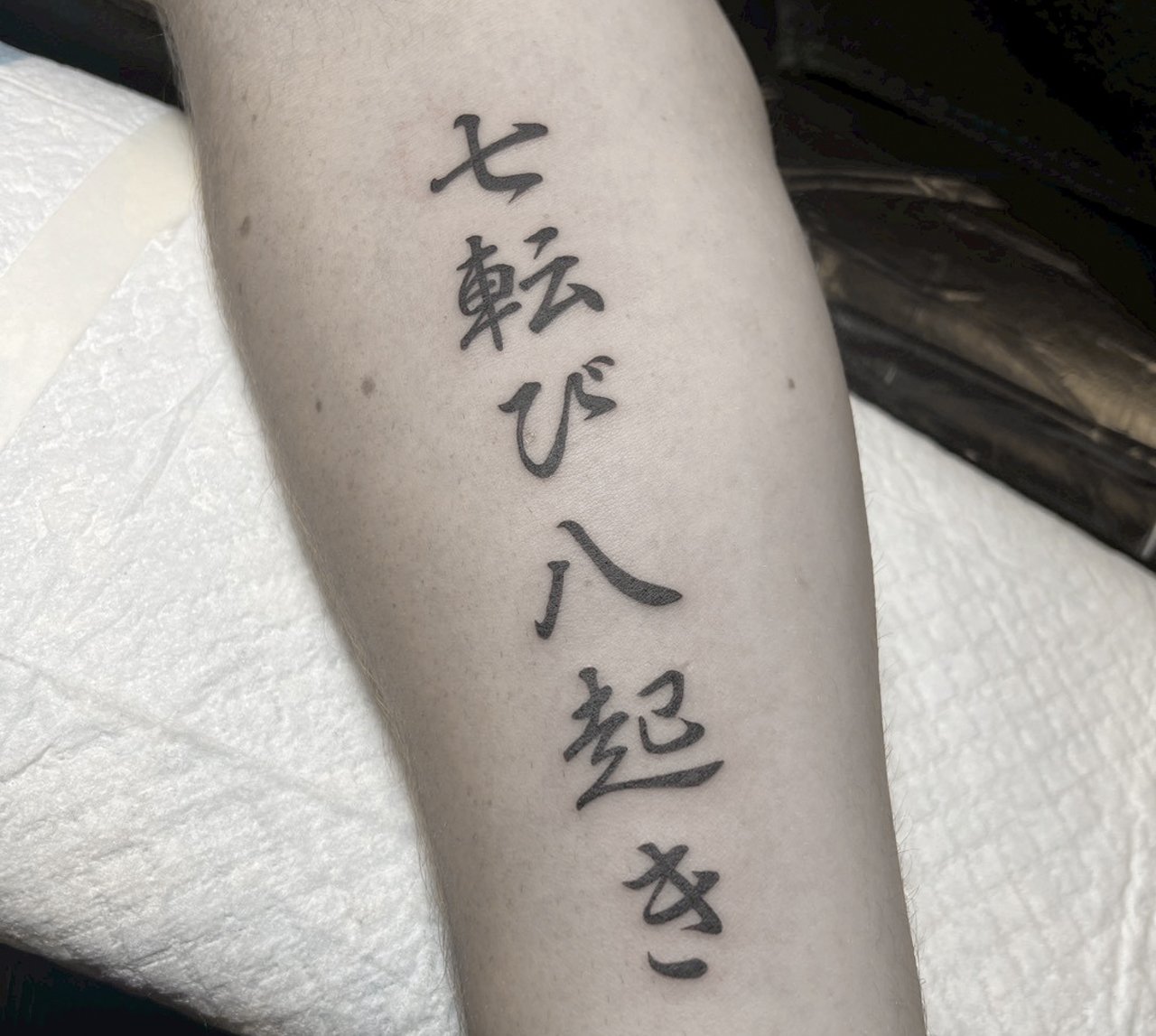
Meaning
「七転び八起き」 is the spirit of rising one more time than you fall.
Background & Cultural Context
A well‑known proverb for children and adults—hope in action.
Why People Choose It
To mark recovery, fresh starts, and steady pursuit.
Symbolism & Themes
Resilience, optimism, perseverance.
友達 (Tomodachi) — Friendship

Meaning
「友達」 celebrates chosen family—the friends who stand with you.
Background & Cultural Context
A core value in school days and adult life; seen across film and music.
Why People Choose It
Ideal for pair tattoos, reunions, and lifelong bonds.
Symbolism & Themes
Loyalty, trust, shared history.
静寂 (Seijaku) — Silence / Serenity

Meaning
「静寂」 is stillness so complete you can hear your own breath.
Background & Cultural Context
Found in temple gardens and winter mornings—space for reflection.
Why People Choose It
For meditators and anyone guarding inner peace.
Symbolism & Themes
Calm, clarity, poise.
忍耐 (Nintai) — Endurance / Perseverance
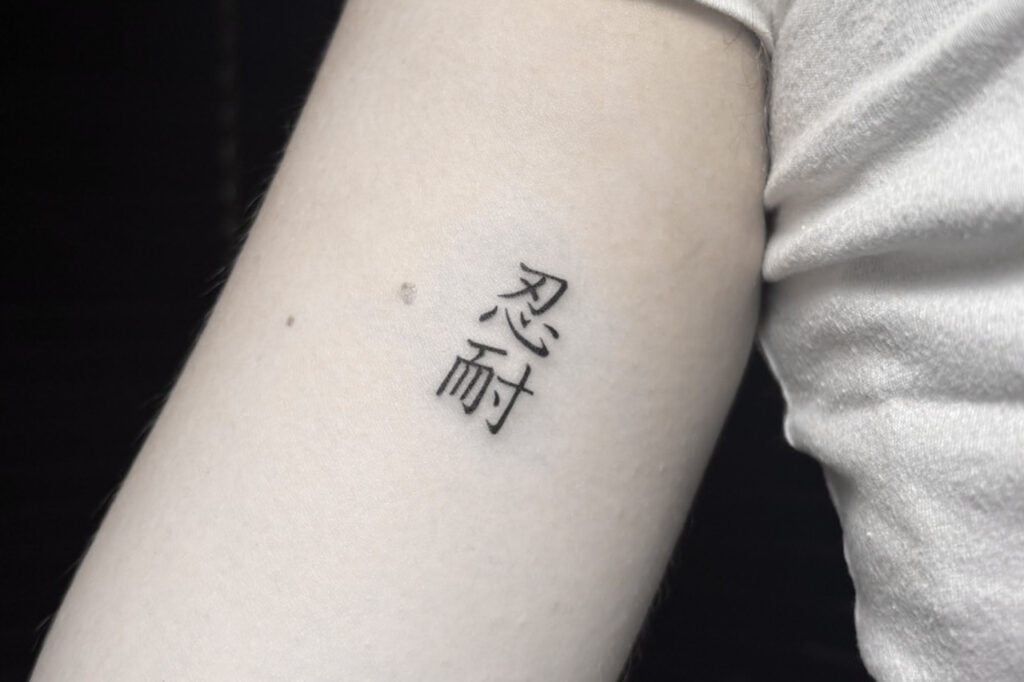
Meaning
「忍耐」 is endurance with a quiet spine—holding steady even when the world is unkind.
Background & Cultural Context
A long-respected virtue in Japanese life, from martial arts discipline to everyday hardship; often depicted in proverbs and classic literature.
Why People Choose It
Chosen by those who have survived difficulty, protect long-term goals, or want a reminder to stay unwavering.
Symbolism & Themes
Resilience, perseverance, inner strength.
絆 (Kizuna) — Bond / Connection
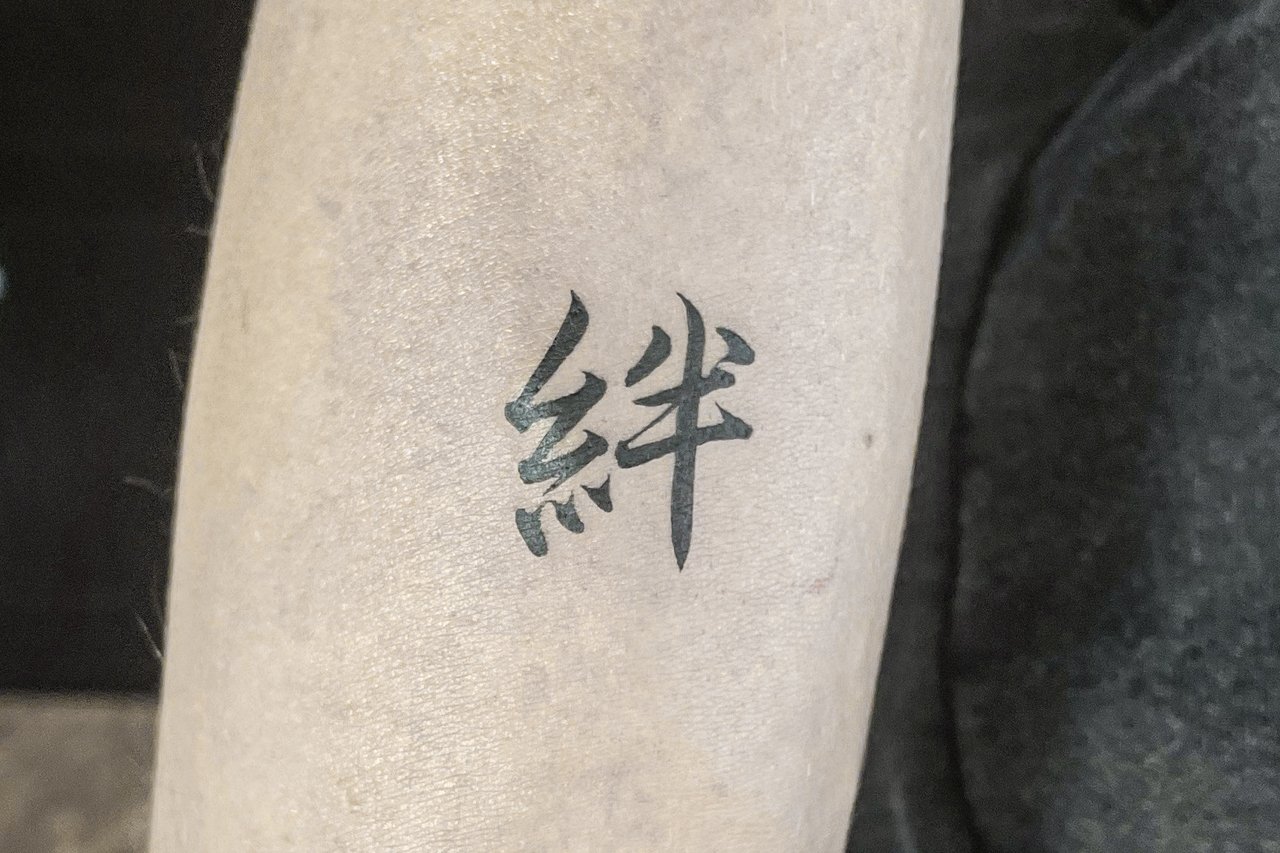
Meaning
「絆」 names the ties that hold people together through time and trial.
Background & Cultural Context
Its visibility grew after national hardships—standing for mutual support.
Why People Choose It
To honor families, teams, and communities that carried them through.
Symbolism & Themes
Solidarity, empathy, shared strength.
運命 (Unmei) — Destiny / Fate
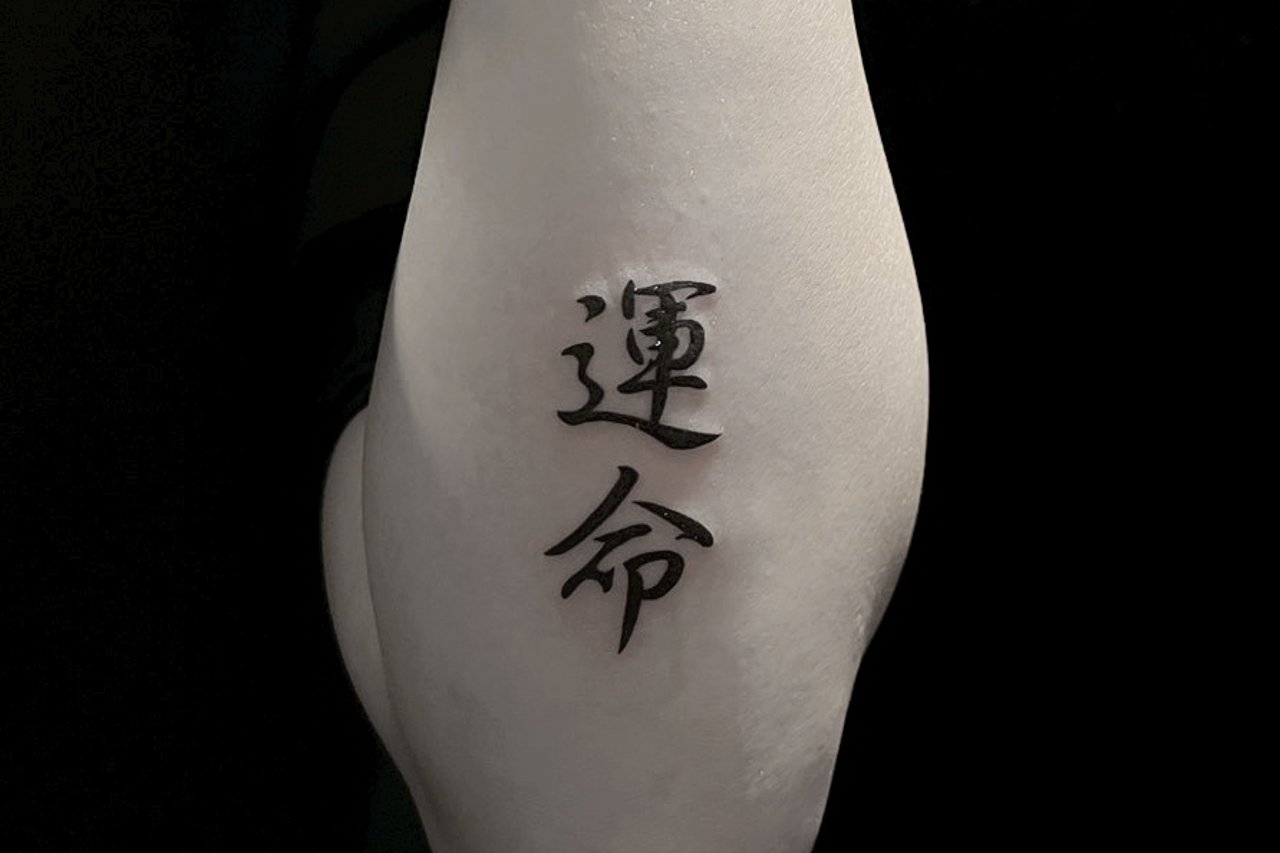
Meaning
「運命」 blends moving events with a guiding thread—what comes to meet you.
Background & Cultural Context
Common in books and film; it carries romance and weight.
Why People Choose It
To mark meetings, moves, or career turns that felt “meant to be.”
Symbolism & Themes
Calling, alignment, life’s story arc.
Why Choose Good Times Ink in Osaka for Your Kanji Tattoo
Craft and Cultural Understanding
We treat kanji as culture, not clip art. Our artists study stroke order, balance, and character anatomy so your piece keeps the quiet poise that defines Japanese Symbol Tattoos. Careful spacing and respect for the character’s inner logic keep your tattoo elegant for years.
Bilingual Support (English & Japanese) — Best Tattoo Studio Osaka for Meaning‑Accurate Kanji
From first idea to final stencil, speak naturally in English or Japanese. We listen, clarify nuance, and provide native checks so your Kanji Tattoo Meaning is correct and culturally natural. That bilingual process is why travelers searching for “Osaka Tattoo” trust Good Times Ink Osaka with words that matter.
A Studio Where Tradition Meets Today
GTI blends the restraint of calligraphy with modern tattoo craft. Whether you choose a Minimal Japanese Tattoo or a bold four‑character idiom, we build the design on clarity, authenticity, and your story—so the meaning reads true in Japan and everywhere you go.

